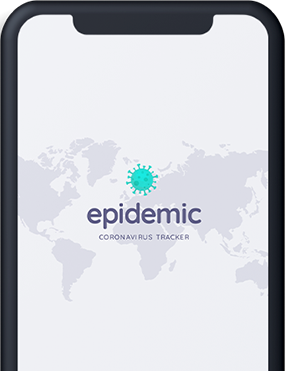
Pandemic of Coronavirus Disease 2019-2020
The 2019–20 coronavirus pandemic is an ongoing pandemic of coronavirus disease 2019 (COVID-19), caused by severe acute respiratory syndrome coronavirus 2 (SARS-CoV-2). The outbreak was first identified in Wuhan, Hubei, China, in December 2019. The World Health Organization (WHO) declared the outbreak to be a Public Health Emergency of International Concern on 30 January 2020 and recognized it as a pandemic on 11 March.
Read more aboutWhat are Coronavirus?
What is the COVID-19?
COVID-19 is a new strain of coronavirus that has not been previously identified in humans. It was first identified in Wuhan, Hubei Province, China, where it has caused a large and ongoing outbreak. It has since spread more widely in China. Cases have since been identified in several other countries. The COVID-19 virus is closely related to a bat coronavirus.
Protection
How to protect yourself
Symptoms
Check basic symptoms
Appointment
Get online consultation
About COVID-19
Read more about coronavirus
SARS-CoV2- is closely related to the SARS-CoV
It is thought to have a zoonotic origin. Genetic analysis has revealed that the coronavirus genetically clusters with the genus Betacoronavirus, in subgenus Sarbecovirus (lineage B) together with two bat-derived strains. It is 96% identical at the whole genome level to other bat coronavirus samples (BatCov RaTG13). In February 2020, Chinese researchers found that there is only one amino acid difference in certain parts of the genome sequences between the viruses from pangolins and those from humans, however, whole-genome comparison to date found at most 92%...
Read more about
Have questions? Find answers!
Frequently Asked Questions

The first symptoms of COVID-19 and influenza (flu) infections are often very similar. They both cause fever and similar respiratory symptoms, which can then range from mild through to severe disease, and sometimes can be fatal. Both viruses are also transmitted in the same way, by coughing or sneezing, or by contact with hands, surfaces or objects contaminated with the virus.
Read more aboutThe first symptoms of COVID-19 and influenza (flu) infections are often very similar. They both cause fever and similar respiratory symptoms, which can then range from mild through to severe disease, and sometimes can be fatal. Both viruses are also transmitted in the same way, by coughing or sneezing, or by contact with hands, surfaces or objects contaminated with the virus.
Read more aboutThe first symptoms of COVID-19 and influenza (flu) infections are often very similar. They both cause fever and similar respiratory symptoms, which can then range from mild through to severe disease, and sometimes can be fatal. Both viruses are also transmitted in the same way, by coughing or sneezing, or by contact with hands, surfaces or objects contaminated with the virus.
Read more aboutThe first symptoms of COVID-19 and influenza (flu) infections are often very similar. They both cause fever and similar respiratory symptoms, which can then range from mild through to severe disease, and sometimes can be fatal. Both viruses are also transmitted in the same way, by coughing or sneezing, or by contact with hands, surfaces or objects contaminated with the virus.
Read more aboutThe first symptoms of COVID-19 and influenza (flu) infections are often very similar. They both cause fever and similar respiratory symptoms, which can then range from mild through to severe disease, and sometimes can be fatal. Both viruses are also transmitted in the same way, by coughing or sneezing, or by contact with hands, surfaces or objects contaminated with the virus.
Read more about
Transmitting
How it is spreading?
The virus is mainly spread during close contact and by respiratory droplets produced when people cough or sneeze. Respiratory droplets may be produced during breathing but the virus is not generally airborne.
Read more
Basic Symptoms
What are the symptoms?
The virus is mainly spread during close contact and by respiratory droplets produced when people cough or sneeze. Respiratory droplets may be produced during breathing but the virus is not generally airborne.
Read more
Threatment
How to prevent?
The virus is mainly spread during close contact and by respiratory droplets produced when people cough or sneeze. Respiratory droplets may be produced during breathing but the virus is not generally airborne.
Read more


Think you might be affected?
Try our simple coronavirus checker to find out what you need to do.











